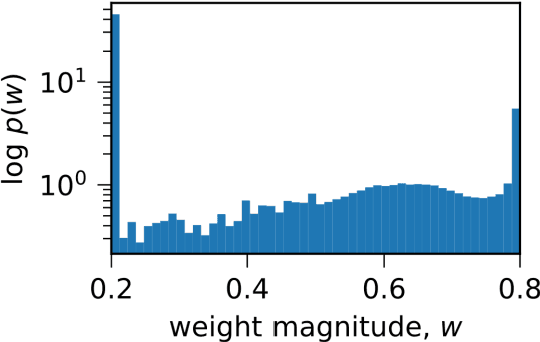Sergey Sukhov
Effective Stimulus Propagation in Neural Circuits: Driver Node Selection
Jun 16, 2025Abstract:Precise control of signal propagation in modular neural networks represents a fundamental challenge in computational neuroscience. We establish a framework for identifying optimal control nodes that maximize stimulus transmission between weakly coupled neural populations. Using spiking stochastic block model networks, we systematically compare driver node selection strategies - including random sampling and topology-based centrality measures (degree, betweenness, closeness, eigenvector, harmonic, and percolation centrality) - to determine minimal control inputs for achieving inter-population synchronization. Targeted stimulation of just 10-20% of the most central neurons in the source population significantly enhances spiking propagation fidelity compared to random selection. This approach yields a 2.7-fold increase in signal transfer efficiency at critical inter-module connection densities p_inter = 0.04-0.07. These findings establish a theoretical foundation for precision neuromodulation in biological neural systems and neurotechnology applications.
Continuous learning of spiking networks trained with local rules
Nov 18, 2021



Abstract:Artificial neural networks (ANNs) experience catastrophic forgetting (CF) during sequential learning. In contrast, the brain can learn continuously without any signs of catastrophic forgetting. Spiking neural networks (SNNs) are the next generation of ANNs with many features borrowed from biological neural networks. Thus, SNNs potentially promise better resilience to CF. In this paper, we study the susceptibility of SNNs to CF and test several biologically inspired methods for mitigating catastrophic forgetting. SNNs are trained with biologically plausible local training rules based on spike-timing-dependent plasticity (STDP). Local training prohibits the direct use of CF prevention methods based on gradients of a global loss function. We developed and tested the method to determine the importance of synapses (weights) based on stochastic Langevin dynamics without the need for the gradients. Several other methods of catastrophic forgetting prevention adapted from analog neural networks were tested as well. The experiments were performed on freely available datasets in the SpykeTorch environment.
 Add to Chrome
Add to Chrome Add to Firefox
Add to Firefox Add to Edge
Add to Edge